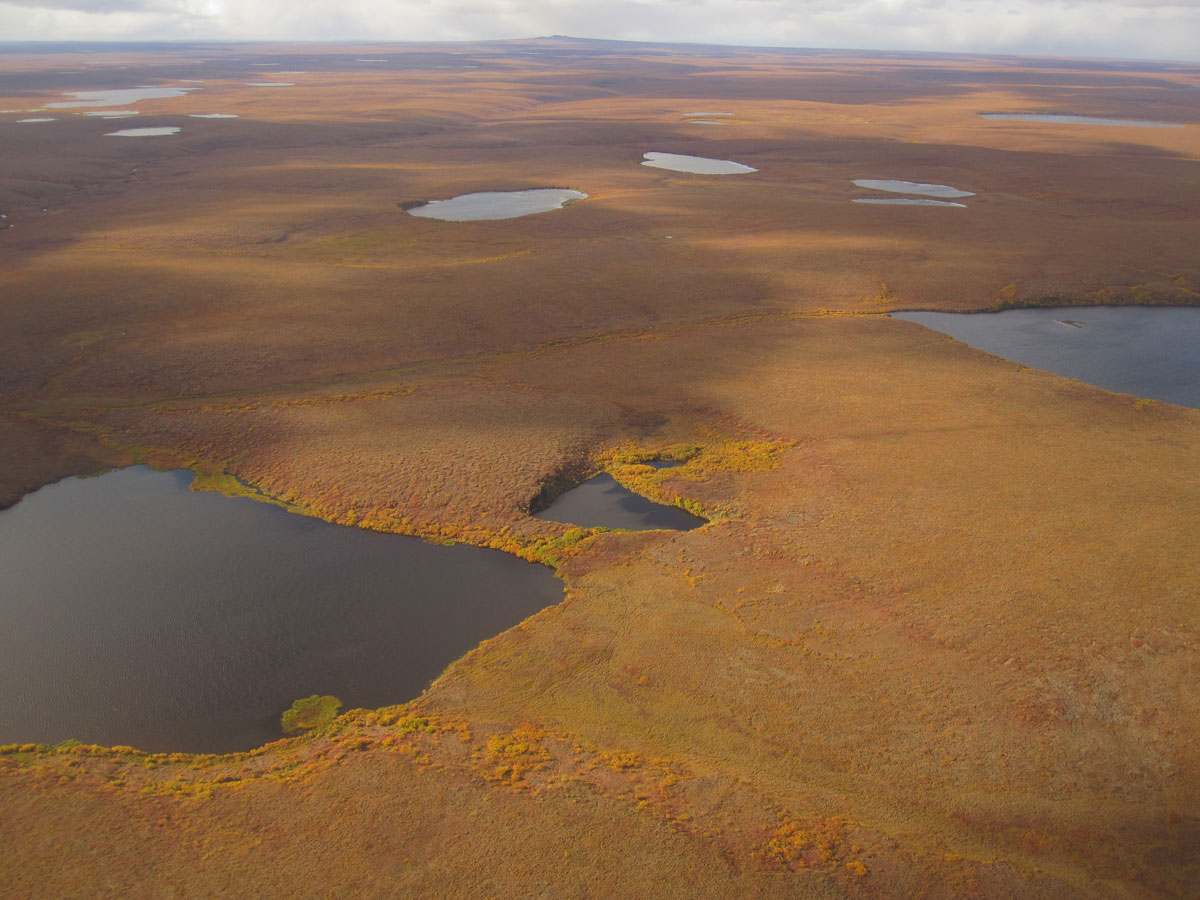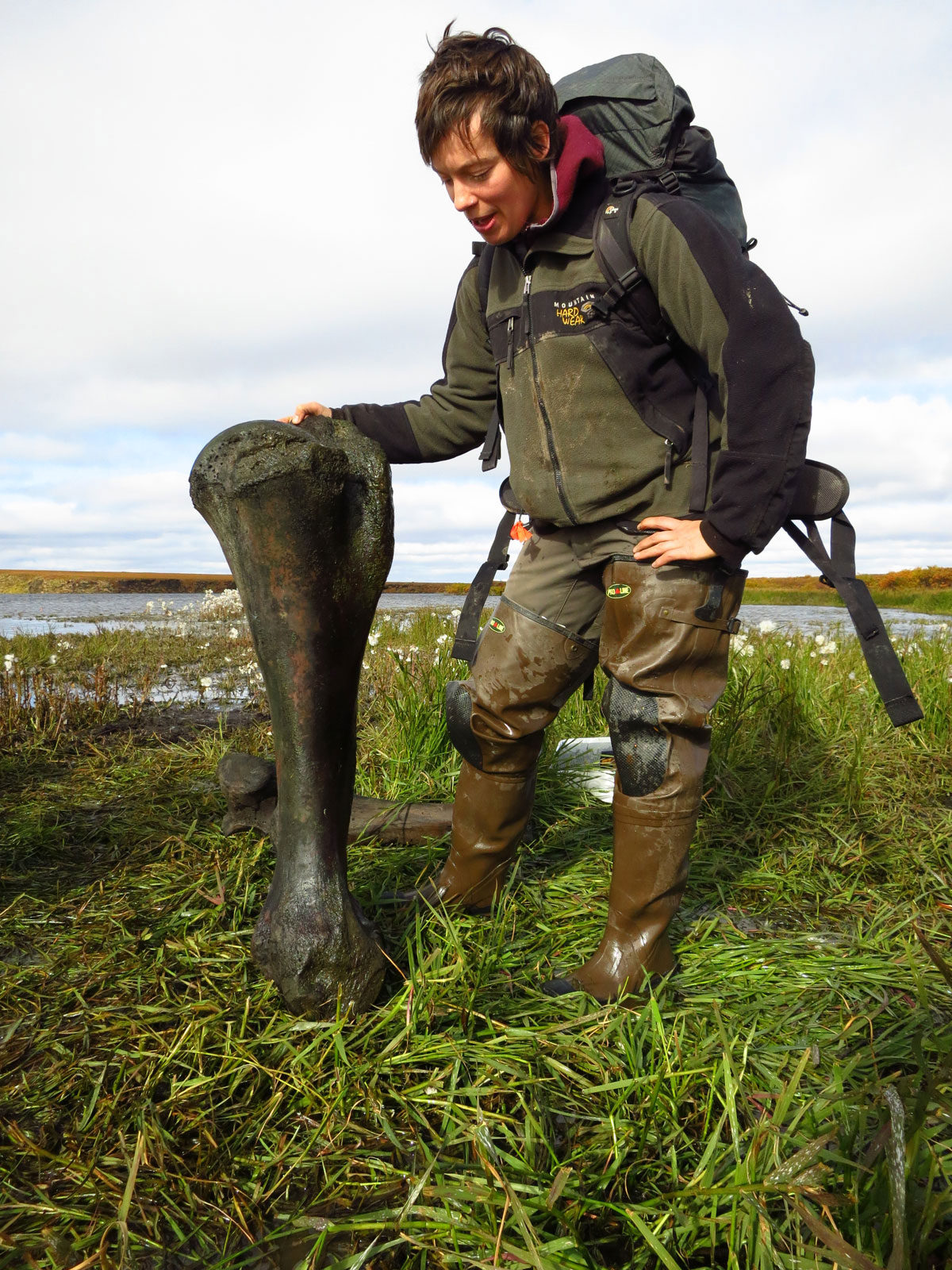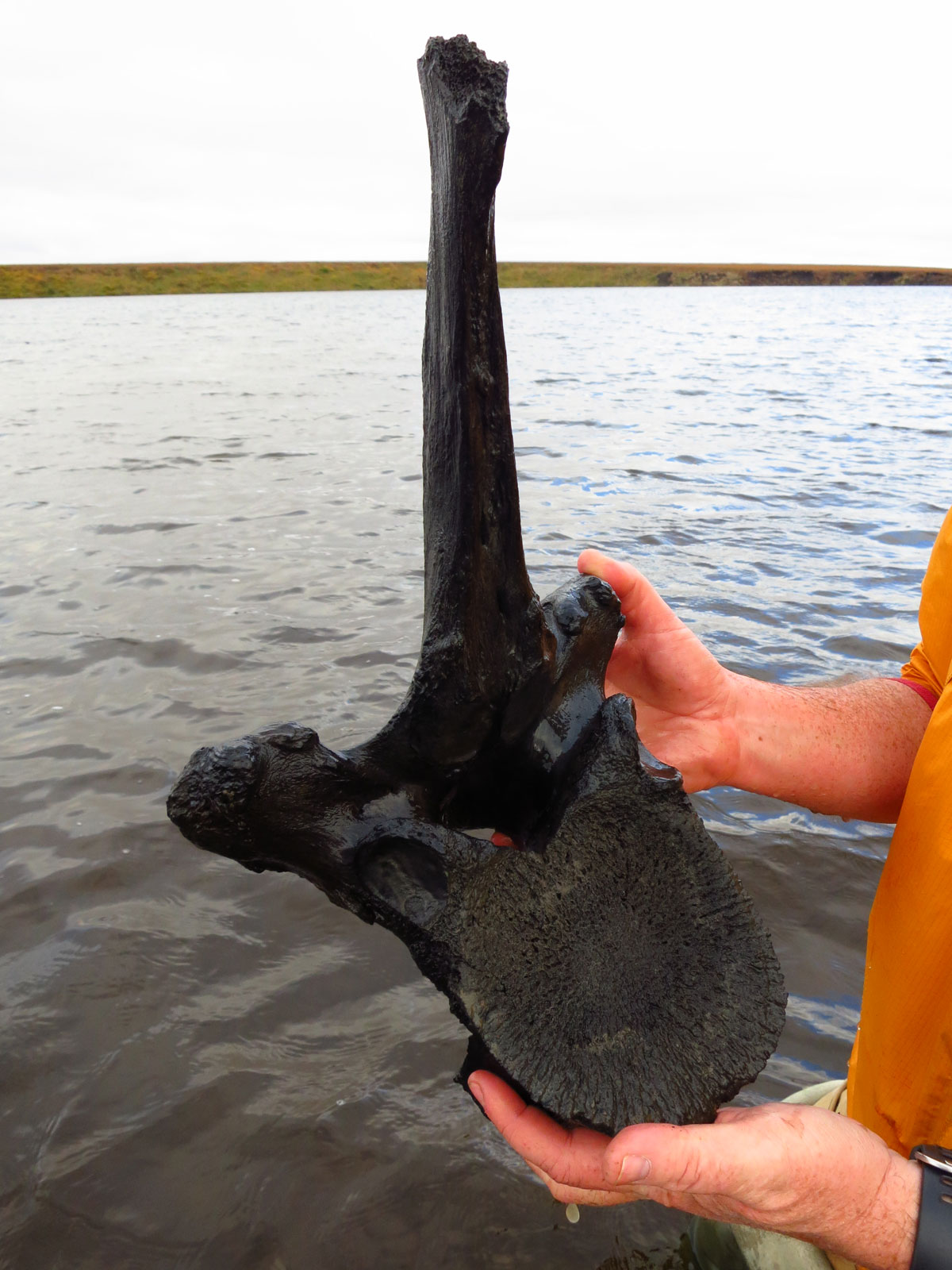In July 2012, the remains of a partially intact Woolly Mammoth (Mammuthus primigenius) were discovered by Amy Larsen, an Aquatic Ecologist with the National Park Service's (NPS) Arctic Network (ARCN) and Pilot Eric Sieh of NPS & US Fish and Wildlife, in shallow waters of a lake in Bering Land Bridge National Preserve. Initial observations included two limb bones, a tooth and a few large unidentified elements. From this preliminary assemblage, the single tooth was collected and later sent off for c14 dating.

NPS J. Rasic Photo
A subsequent reconnaissance trip to the area in September 2012, by Western Arctic National Parklands (WEAR) Archeologist Jon Hardes, Museum of the North & Gates of the Arctic Archeologist Jeff Rasic, UAF geology doctoral student Louise Farquharson and Pilot Eric Sieh, observed the semi-articulated humerus and ulna (front leg bones) of the mammoth as well as some partial rib and vertebra fragments. Several bones from a caribou (Rangifer tarandus) were also discovered within the bone scatter. A portion of one of the mammoth vertebra fragments was collected and submitted for c14 dating. Sediment and peat samples were also described and collected. These will help researchers to reconstruct the past local environment in which the mammoth lived and help us to better understand the formational process acting upon the thaw lake in which it was discovered.

NPS Jon Hardes Photo
Though the mammoth tooth and vertebra were recovered some 50 meters apart from one another, they both returned statistically identical dates, with ages of approximately 12,400 years before present (BP). These dates provide a good indication that the bones originated from the same individual. Also of particular interest to archeologists is the fact that this age places the mammoth within a timeframe that may coincide with the initial appearance of humans in this part of the world.

NPS J. Rasic Photo
Following these preliminary investigations, researchers from WEAR and UAF are now working to construct a research design and to secure funding for the future, multi-disciplinary work at the site. Many questions remain, including: How complete is the mammoth skeleton? What other species may be present? Were early human hunters involved in the death of this animal? What vegetation covered the area some 12,000 years ago? What caused the death of this animal and ultimately, the extinction of the entire species?
For more information about the National Park Service Paleontology Program, click here.
